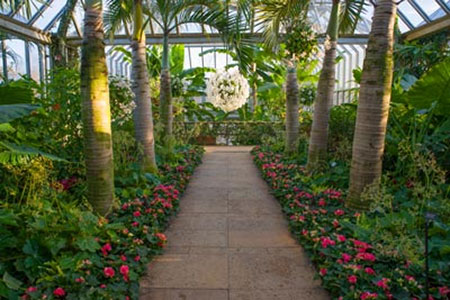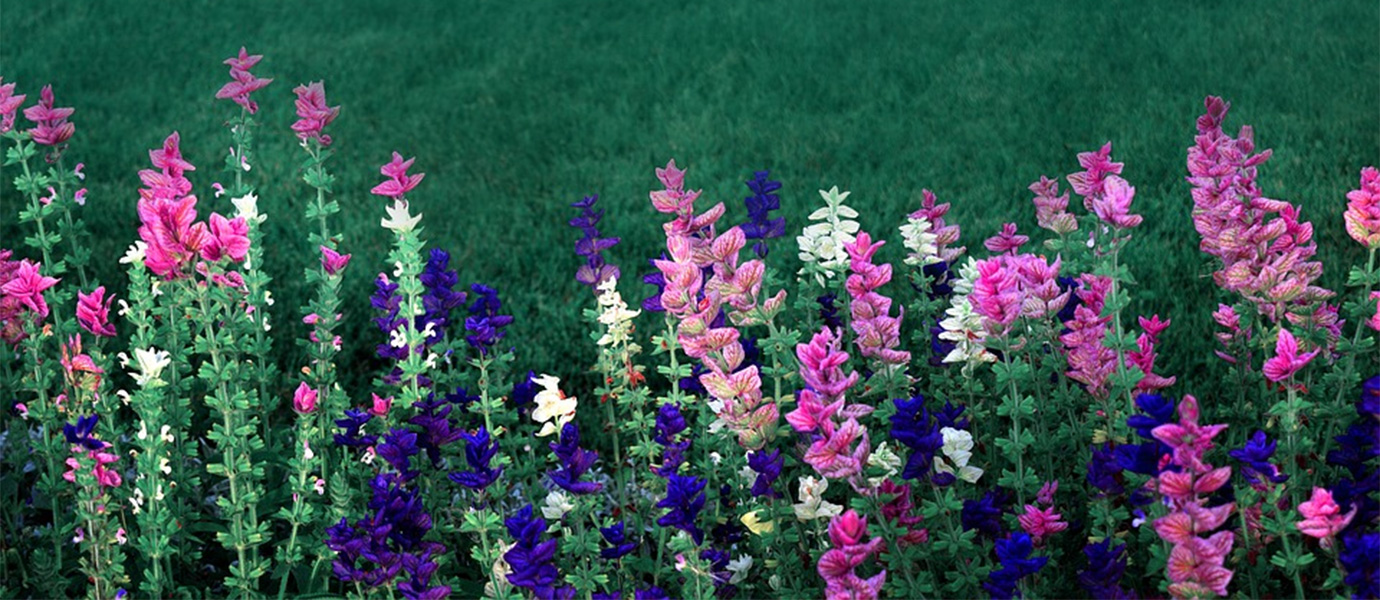
School
Guided field trips typically explore the shape, structure, and adaptations of different seeds, trees, and plants found in the garden. Older grades can embark on a field study, using the prairie, the lake, and other parts of the garden to study how plants and aquatic life adapt to and reflect their environment. Students might collect water samples, compare the different plant parts involved in reproduction, look at photosynthesis under a microscope, or pot a plant to take home.
supports classroom learning in:
Environmental Science.
topics covered:
Biology, Conservation, Ecology, Natural History.
INFO
ABOUT
Chicago Botanic Garden
The Garden’s 31 different natural areas offer a wide variety of types of plants, environments, and even architecture for groups to explore. Engage your mind, body, and senses as you wander through the beautiful botanic displays.
contact info
Hrs: 8AM-5PM Daily.
HELPFUL LESSON PLAN(S)
Prepared by FieldTripDirectory.com
Botanical Garden Lesson Plan
FUN FACTS
The diverse world of plants is perhaps the weirdest, and most fascinating, of all living things. Bamboo can grow over three feet in one day (you can literally watch it grow). There are 600 species of carnivorous plants, which trap and digest insects, frogs, or small birds (if a vegetarian eats this plant, are they still a vegetarian?). The world’s largest flower, Rafflesia, can grow up to three feet in diameter (how big would a bouquet be…). Do a little digging on your next trip to a botanical garden (not literally!), and see what interesting plant facts you can find.
View Lesson Plan>>
Scouts
Guided field trips typically explore the shape, structure, and adaptations of different seeds, trees, and plants found in the garden. Older scouts can embark on a field study, using the prairie, the lake, and other parts of the garden to study how plants and aquatic life adapt to and reflect their environment. Scouts might collect water samples, compare the different plant parts involved in reproduction, look at photosynthesis under a microscope, or pot a plant to take home.
supports scout badges in:
Environmental Science.
topics covered:
Biology, Conservation, Ecology, Natural History.
INFO
ABOUT
Chicago Botanic Garden
The Garden’s 31 different natural areas offer a wide variety of types of plants, environments, and even architecture for groups to explore. Engage your mind, body, and senses as you wander through the beautiful botanic displays.
contact info
Hrs: 8AM-5PM Daily.
HELPFUL LESSON PLAN(S)
Prepared by FieldTripDirectory.com
Botanical Garden Lesson Plan
FUN FACTS
The diverse world of plants is perhaps the weirdest, and most fascinating, of all living things. Bamboo can grow over three feet in one day (you can literally watch it grow). There are 600 species of carnivorous plants, which trap and digest insects, frogs, or small birds (if a vegetarian eats this plant, are they still a vegetarian?). The world’s largest flower, Rafflesia, can grow up to three feet in diameter (how big would a bouquet be…). Do a little digging on your next trip to a botanical garden (not literally!), and see what interesting plant facts you can find.
View Lesson Plan>>
Camp
Guided field trips typically explore the shape, structure, and adaptations of different seeds, trees, and plants found in the garden. Older campers can embark on a field study, using the prairie, the lake, and other parts of the garden to study how plants and aquatic life adapt to and reflect their environment. Campers might collect water samples, compare the different plant parts involved in reproduction, look at photosynthesis under a microscope, or pot a plant to take home.
topics covered:
Biology, Conservation, Ecology, Natural History.
INFO
ABOUT
Chicago Botanic Garden
The Garden’s 31 different natural areas offer a wide variety of types of plants, environments, and even architecture for groups to explore. Engage your mind, body, and senses as you wander through the beautiful botanic displays.
contact info
Hrs: 8AM-5PM Daily.
HELPFUL LESSON PLAN(S)
Prepared by FieldTripDirectory.com
Botanical Garden Lesson Plan
FUN FACTS
The diverse world of plants is perhaps the weirdest, and most fascinating, of all living things. Bamboo can grow over three feet in one day (you can literally watch it grow). There are 600 species of carnivorous plants, which trap and digest insects, frogs, or small birds (if a vegetarian eats this plant, are they still a vegetarian?). The world’s largest flower, Rafflesia, can grow up to three feet in diameter (how big would a bouquet be…). Do a little digging on your next trip to a botanical garden (not literally!), and see what interesting plant facts you can find.
View Lesson Plan>>
Homeschool
Guided field trips typically explore the shape, structure, and adaptations of different seeds, trees, and plants found in the garden. Older grades can embark on a field study, using the prairie, the lake, and other parts of the garden to study how plants and aquatic life adapt to and reflect their environment. Students might collect water samples, compare the different plant parts involved in reproduction, look at photosynthesis under a microscope, or pot a plant to take home.
supports classroom learning in:
Environmental Science.
topics covered:
Biology, Conservation, Ecology, Natural History.
INFO
ABOUT
Chicago Botanic Garden
The Garden’s 31 different natural areas offer a wide variety of types of plants, environments, and even architecture for groups to explore. Engage your mind, body, and senses as you wander through the beautiful botanic displays.
contact info
Hrs: 8AM-5PM Daily.
HELPFUL LESSON PLAN(S)
Prepared by FieldTripDirectory.com
Botanical Garden Lesson Plan
FUN FACTS
The diverse world of plants is perhaps the weirdest, and most fascinating, of all living things. Bamboo can grow over three feet in one day (you can literally watch it grow). There are 600 species of carnivorous plants, which trap and digest insects, frogs, or small birds (if a vegetarian eats this plant, are they still a vegetarian?). The world’s largest flower, Rafflesia, can grow up to three feet in diameter (how big would a bouquet be…). Do a little digging on your next trip to a botanical garden (not literally!), and see what interesting plant facts you can find.
View Lesson Plan>>
